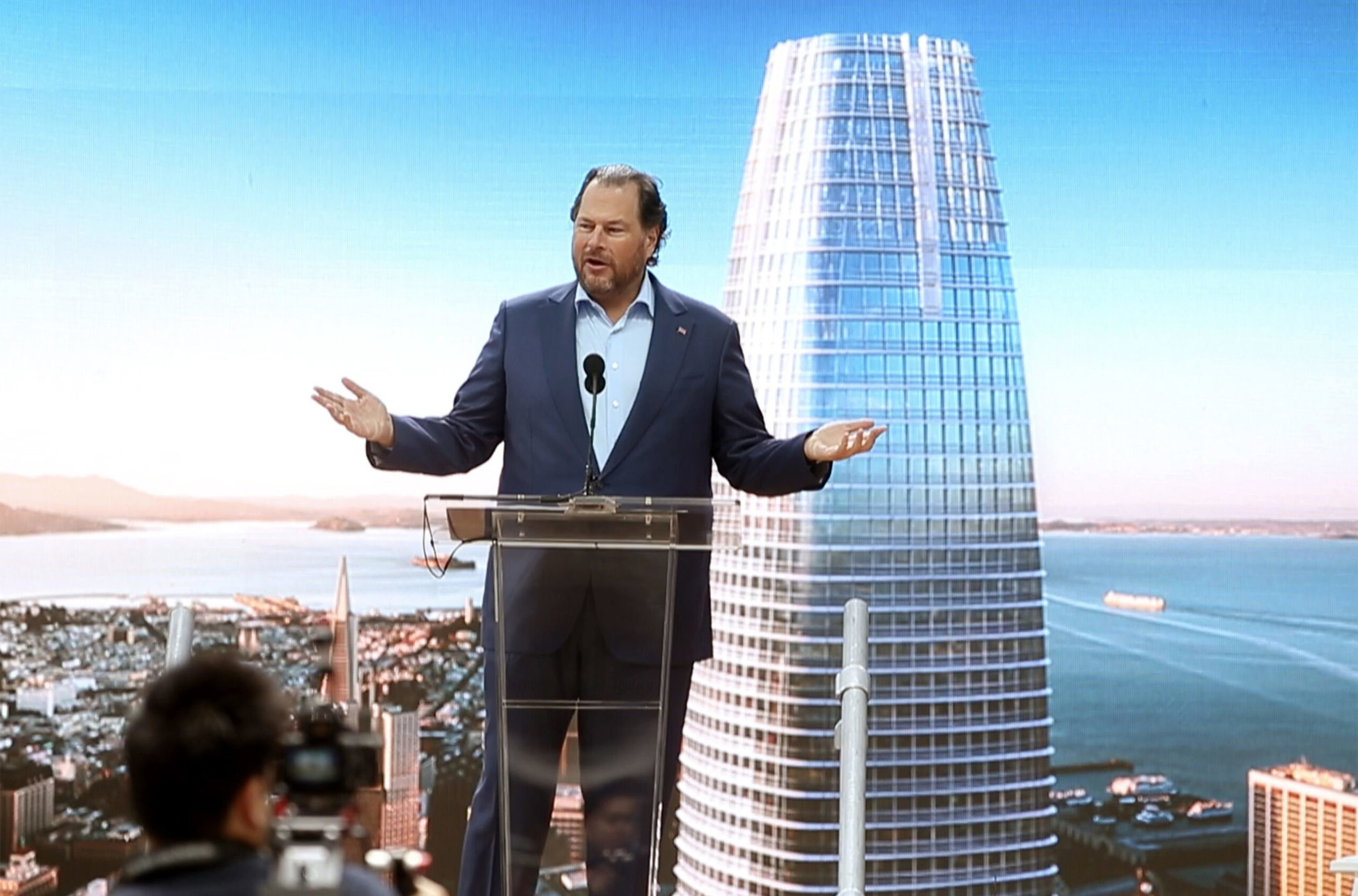After years of growth that included billions in acquisitions, major hiring initiatives and the development of major office towers around the world, San Francisco-based Salesforce is tightening its belt.
Although defended by CEO Marc Benioff as necessary to meet changing market conditions, a restructuring plan Salesforce announced earlier this year includes a 10% headcount reduction of around 8,000 employees and a number of major exits and office space reductions across the company’s portfolio.
Further details were revealed in a recent financial filing (opens in new tab), which showed how much real estate the tech giant still holds in San Francisco and how much it has let go.
As of Jan. 31, the company’s San Francisco headquarters office included around 1.6 million square feet of leased and owned property. That number doesn’t include 800,000 square feet in San Francisco that is currently subleased and an additional 700,000 square feet now available for sublease.
The company has steadily shed office space throughout the pandemic, most recently listing six floors for sublease at Salesforce Tower (opens in new tab), the San Francisco Business Times reported.
Outside of San Francisco, Salesforce has international real estate holdings across Europe, North America, Asia, South America, Africa and Australia. It also operates data centers in the U.S., Europe and Asia.
In the last fiscal year, Salesforce incurred $986 million in total operating lease costs. The filing states that there are additional future leases totaling $400 million, including agreements for offices yet to be constructed, which are expected to commence between fiscal years 2024 and 2025.
Benioff, who once said that full-time office work is largely over, has started to pull back employees in, albeit with more flexibility. He has been open that he believes newer employees especially do better when being trained and onboarded in the office.

Still, he said the number of fully remote workers is “going to increase dramatically” with in-office work largely determined by job function.
Engineering workers, Benioff said, only come in 10 days a quarter, whereas non-remote general and administrative employees are expected to come in on Tuesdays, Wednesdays and Thursdays. For sales and marketing, they are “more of a four-day-a-week executive,” Benioff told tech journalist Kara Swisher in a podcast interview.
Costs from the restructuring plan in the form of separation payments for employees and exit charges associated with office space reductions could total more than $2 billion.
Salesforce has incurred around $828 million in costs related to the restructuring, split up between $683 million in employee transition costs and $145 million for exit costs due to office space reductions.
The company’s layoffs are expected to be largely complete by the end of the fiscal year 2024, whereas its real estate reductions are expected to wrap up sometime in fiscal year 2026.
The company has around $10.6 billion in senior unsecured debt, around $1 billion of which is due in the next 12 months. Among its liabilities is $182 million in outstanding debt related to the mortgage used to purchase 50 Fremont St. in San Francisco.
Salesforce paid $640 million to purchase the 43-story building in 2015. Last year, the company listed more than half (opens in new tab) of the building as available for sublease.
